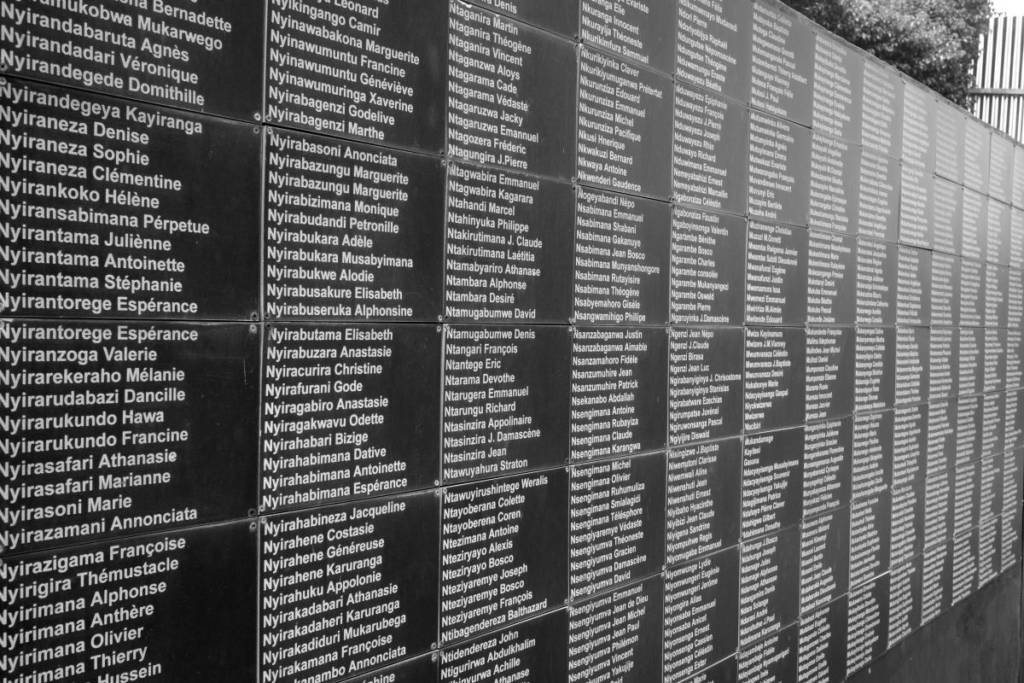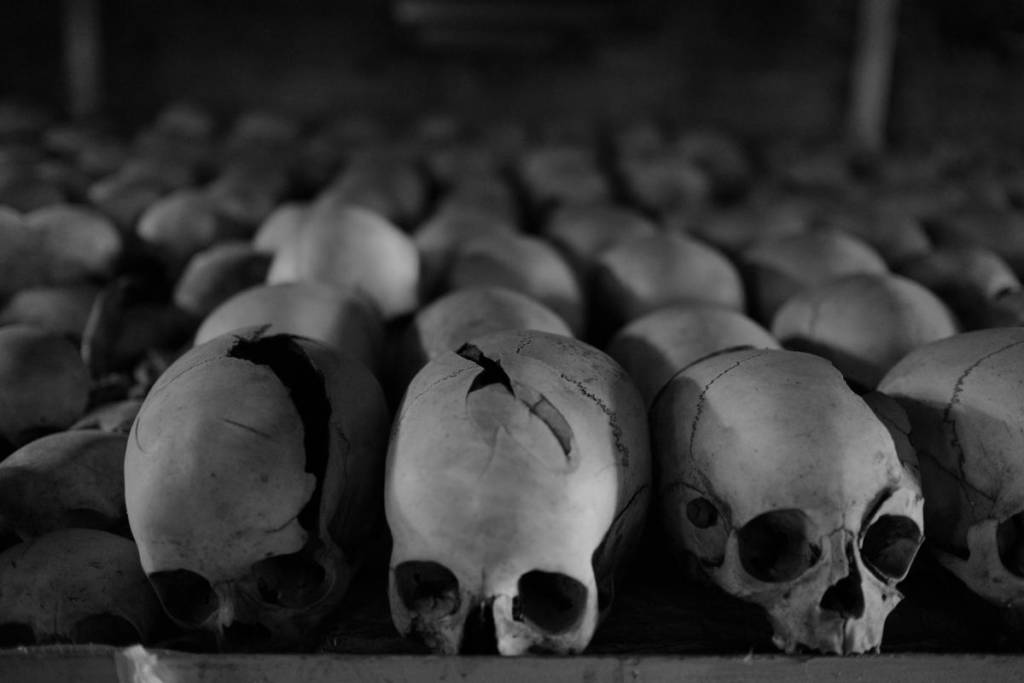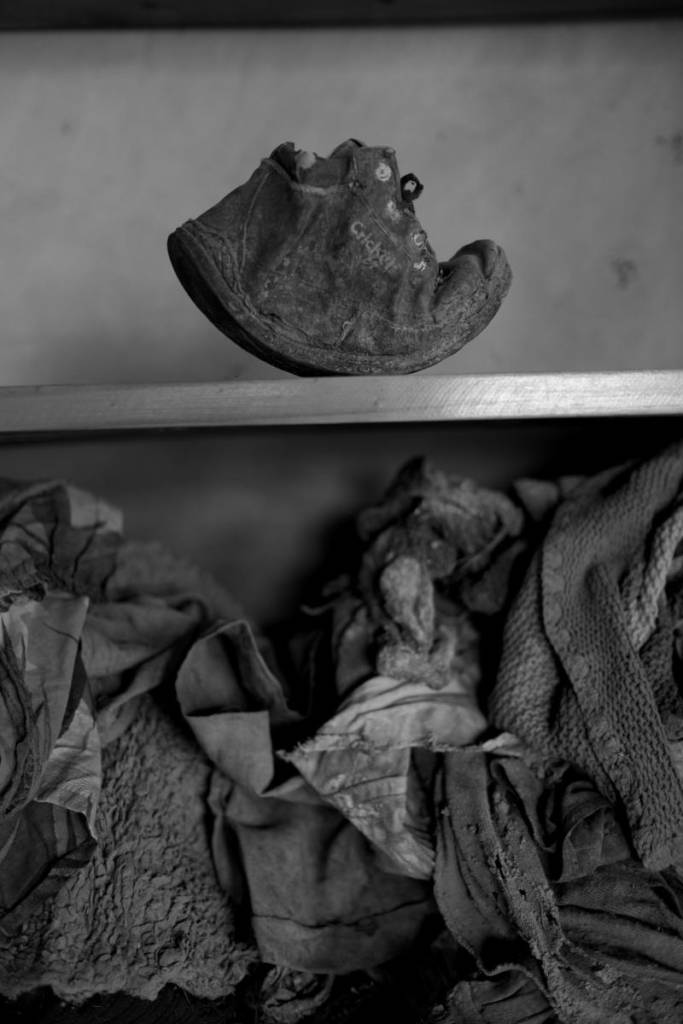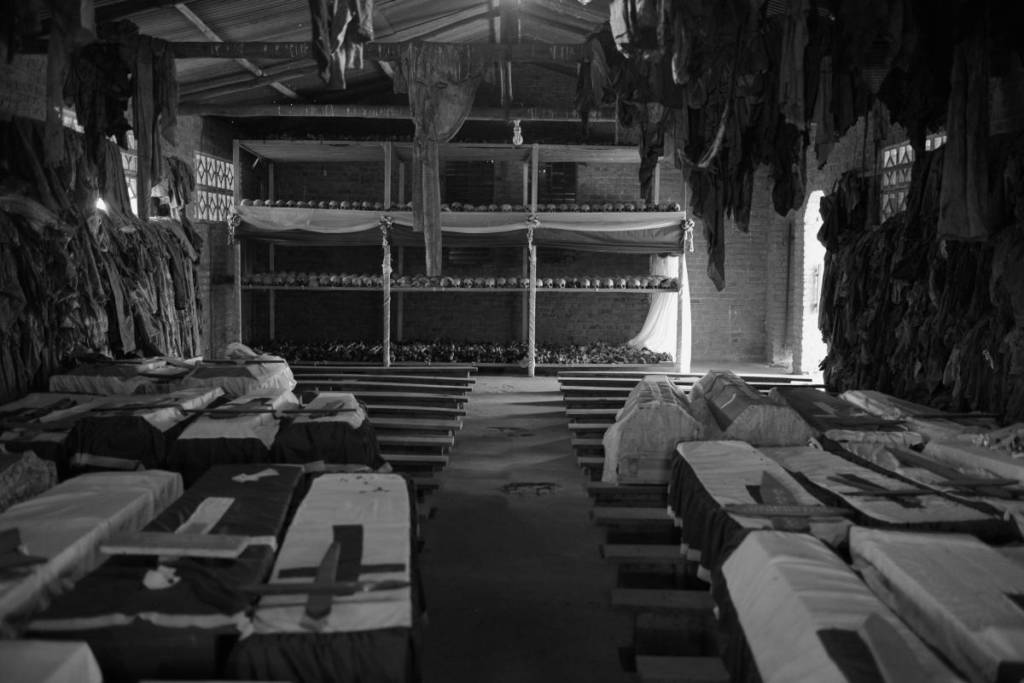April 6, 2014, marks the 20th anniversary of the horrific genocide in the African country of Rwanda, when an average of 8,000 people were killed per day over a period of 100 days.

Victims of the 1994 genocide are engraved in a wall in the Kigali Genocide Memorial Center in the capital of Rwanda.
In 1994, I followed the news out of Rwanda as we learned that over a period of 100 days, those identified as Hutus killed some 800,000 others identified as Tutsis, mostly with machetes. Recently returned from a decade working as a foreign correspondent, I considered returning overseas to cover the immediate aftermath, but only briefly: I was pregnant with my third baby, and I knew from experience a pregnant me could not manage the extended stretches without sleep and food which would be required to report on this story, at once complex and horrifyingly simple.
In the two decades since then, I’ve covered conflict close-range and lived in warzones; in the course of that, I’ve been scarred by losses myself. I’ve thought, mostly inconclusively, about what it takes to go on. I continued, too, to follow the news from this African country about the size of Maryland. So when a chance came to visit Rwanda before the genocide’s 20th anniversary, I was at once wary and eager.
I don’t know what is said in the privacy of their homes, but outside their doors, Rwandans discount the Hutu-Tutsi divide these days; President Kagame has led the effort, largely successful it seems, to remake his countrymen into simply Rwandans.
Still, the genocide is not “history” here. This is apparent in private conversations from the Ugandan border to the boundary with Burundi. It can be measured in the unguarded gaze of Rwandans. It’s also clear from the local genocide memorials that dot the country, as well as national ones, which draw daily visitors.
I arrived in Rwanda at night. The next morning, early, I went to the Ntarama Church, about 30 kilometers south of Kigali, the capital city. In that awful spring of 1994, Tutsis swarmed here because the church had kept them safe from Hutu attacks in the past. They thought they would be safe again. So the buildings and grounds were overflowing with fleeing Rwandans when Hutu paramilitary forces arrived on April 15 and broke down the gates. Some 5,000 were killed expediently.

Skulls line shelves inside the Ntarama Church where Rwandans were instead killed en masse, many with machetes. Some of the skulls bear signs of the violence that took place here.
Today, skulls of those who died here are lined up in a grim mosaic, some cracked, gouged, or split in the violence of that day. Bones are stacked. Clothing, shoes, necklaces, bits of prayer books remain, along with one wall said to bear the blood of children who were smashed against it.
Our “tour guide” was a woman who had lost her family but survived herself; beyond that, she didn’t want to say. She followed a script; I watched as her eyes wandered while she spoke. When I asked if she didn’t find her job difficult day after day, she looked directly at me for a moment before answering. “Yes, very difficult. Very. But it is my duty.” Then she turned away again. I felt torn by conflicting desires: to hug her, and to back away to allow her privacy.

The scraps of clothing are also from the red-brick, Christian Ntarama Church, where it is said the children were killed by smashing their skulls against one wall. Both relatives and visitors still come daily to pay their respects and honor the lives lost when truckloads of fighters pulled up and broke down the gates surrounding the church.
The Kigali Genocide Memorial Center, on one of the hills overlooking the capital, felt more like a traditional memorial museum, as appalling as is the phrase “traditional memorial museum.” The story of pre- and post-genocide years was laid out in detail.
Our guide was younger this time, her demeanor less personally pained, but angrier. She jabbed her finger as she talked about the role European colonists had played in creating artificial divisions that split families: Tutsis were taller, thinner, lighter-skinned, and owned more cows than other Rwandans; they were the elite and made up about 24 percent of the population. Hutus were shorter, with broader facial features, owned fewer livestock, and made up about 75 percent of the population. Twa were shorter and poorer still.
This memorial forced one to look directly at how long and how publicly these murders had been in the making. It made us all culpable. Outside Rwanda, we averted our eyes for indefensible decades as Hutu animosity grew ever louder.
The most difficult memorial for me was the last on my itinerary: at Murambi Technical School, south of Kigali, stood room upon room of preserved skeletons—one thousand in all, the guide said—some still bearing a bit of clothing or tuft of dark hair, each with its own fixed expression of pain or despair: toes curled, babies clutched, jaws frozen open, hands bound behind backs.

At the Murambi Technical School, the site of one of the genocide’s largest massacres. About 1,000 skeletons have been preserved to stand as silent witness to the violence.
The rooms, once intended to be classrooms, smelled precise and difficult. I’ve smelled death before, but this was different—lime mixed thickly with the dust of decaying hair and bone. Some 45,000 people were killed there on April 21, they say. The figures are hard to grasp. The sense of chaos remained palpable. As the guide led out a group to look at the mass graves, I walked around by myself. The tin roofs would not be quiet; they continued to rattle and creak though there was no wind.
I stayed in Rwanda for the rest of the week, branching out. I visited a refugee camp. I ate dinner at the original Hotel Rwanda overlooking the famous swimming pool. I tromped through fields tended by former genocide killers, now wearing salmon-colored uniforms reminiscent of the robes working by monks in Thailand. I spoke to a woman whose husband was a Hutu killer and is now among those prisoners, leaving her to care for their six children alone.
Each encounter piled upon the other within me, becoming in the end a kind of complicated lesson in the possibilities and limits of forgiveness—though forgiveness is the wrong word for something of this magnitude. It is a word better used for “forgive me that I was rude yesterday,” or “that I was thoughtless about your feelings” but not “that I killed your family with a farm tool after getting close enough to see the whites of their eyes.”

What does it take to go on? Every Rwandan is touched by the genocide. I will not forget the enduring anger I saw. But I will also not forget the voices of mothers and grandmothers in a community nutrition center in southern Rwanda who raised their arms to sing about life’s abundance. I left as divided as I’d arrived: deeply discouraged about the futility of that repetitive, fervent vow “never again”; yet equally, unexpectedly, uplifted by the human spirit’s astounding ability to sail, somehow, above the weight of unimaginable sorrow.
Photographs by Cheney Orr
Masha Hamilton is the author of five acclaimed novels, most recently What Changes Everything, published in 2013.




